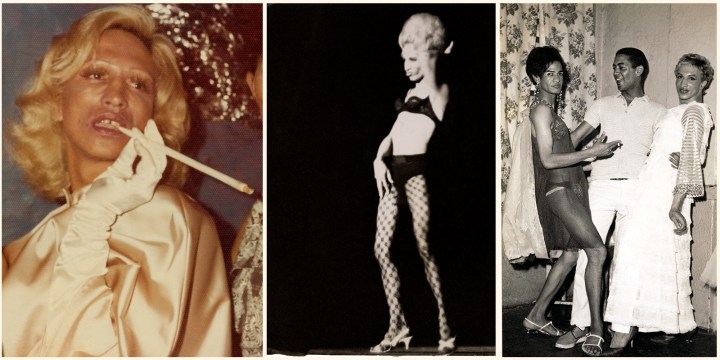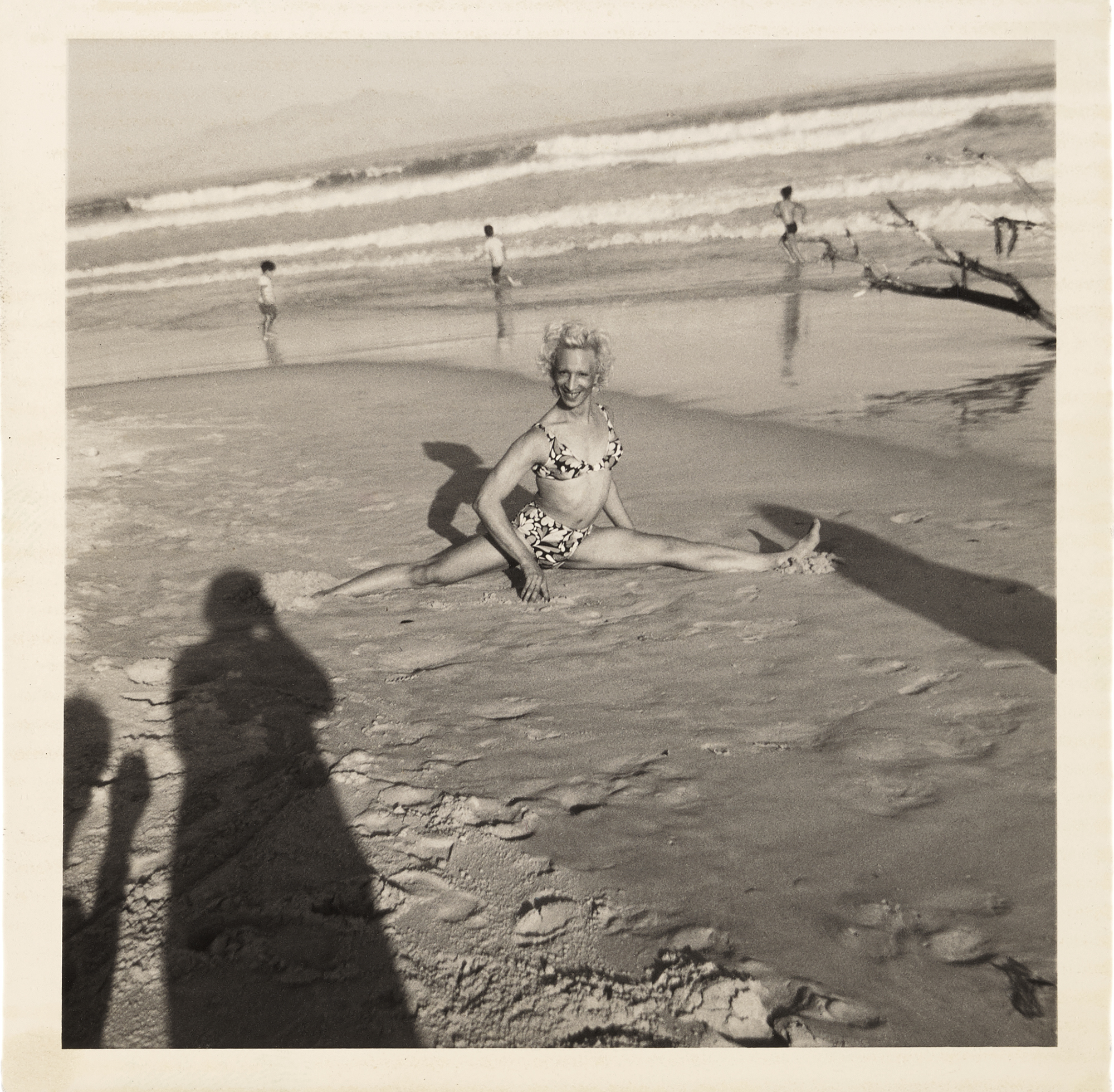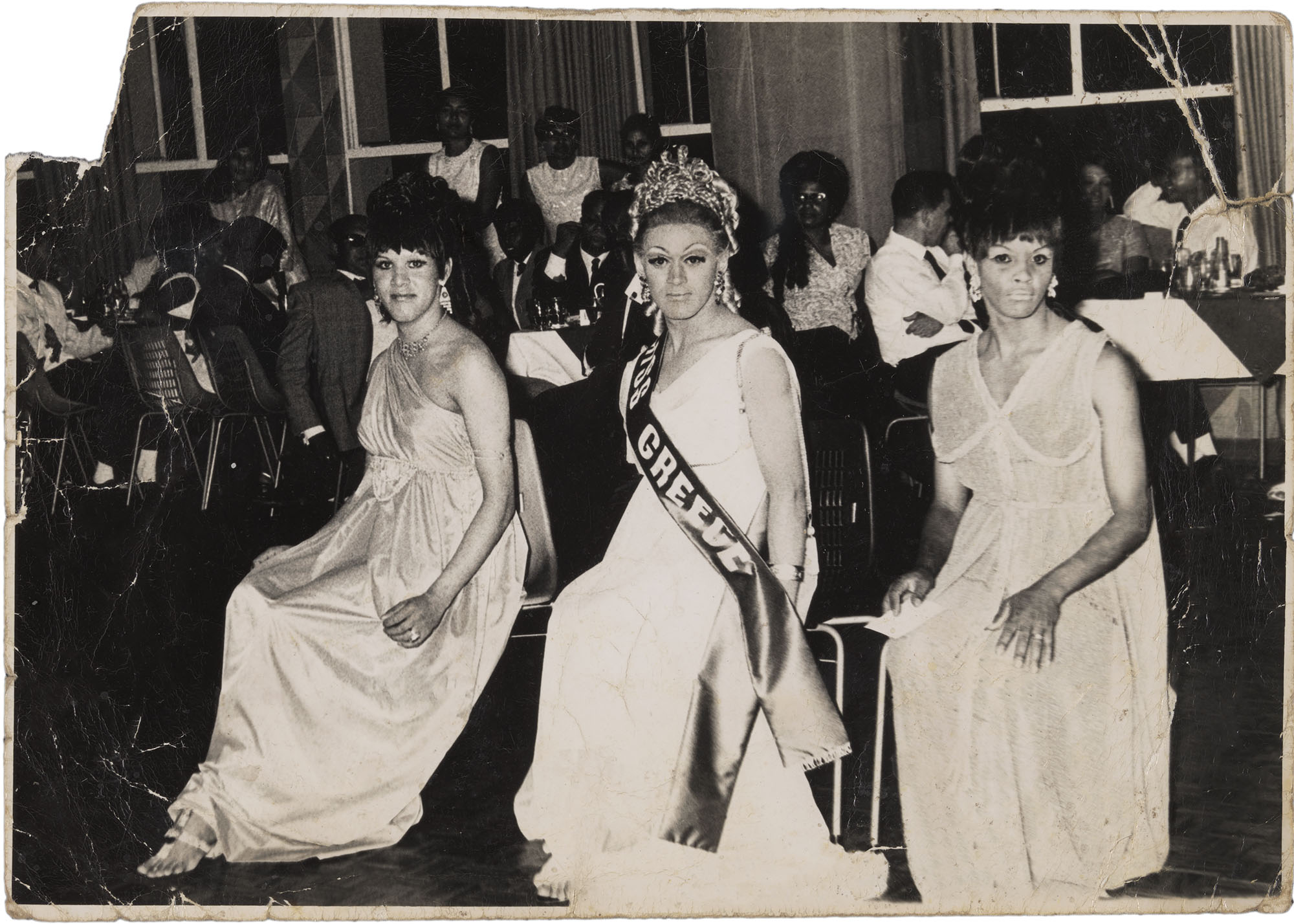PHOTO EXHIBITION
Kewpie in District Six: A celebration of resistance

Gala Archives in partnership with the District Six Museum is showcasing Kewpie: Daughter of District Six at the Market Theatre. The exhibition documents a period of resistance by queer individuals of District Six where they dared to live freely, defying conventional expectations within society, while pushing boundaries of gender, class, and racial stereotypes beyond the limitations of society and discrimination of the apartheid era.
Under apartheid, Western Cape coloured communities were among the first with the earliest and most formalised expression of homosexuality with their “moffie” culture, according to an SA History Online article titled The history of LGBT legislation. Gay men hosted drag parties in clubs where they came together to celebrate their sexuality. The clubs represented what we would refer to now as “safe spaces”, an outlet for the homosexual community to express themselves — and unapologetically so.
Most LGBT communities had to maintain a level of secrecy, going to clubs that catered exclusively to them, or organised gatherings in the safety of community members’ homes. District Six in Cape Town and Sophiatown in Johannesburg are the two places where LGBT folks formed their own communities, away from judgment, prejudice and discrimination from family and people in their communities.
The photographs in the exhibition show the lives of Kewpie and her friends against a backdrop of societal challenges. They trace moments of her life over many years between 1941-2012, recording her own personal histories and inscribing her queer identity on the world.
According to Marlow Valentine, deputy director of the Cape Town-based LGBT support group, Triangle Project, quoted in an article in The New Humanitarian, moffie subculture in District Six emerged during the 1940s and 1950s. It was made up of people from diverse ethnic backgrounds and religious beliefs in the earliest years of apartheid. When District Six was demolished by the apartheid government, a once-blended community of blacks, coloureds and whites who were close to one another were separated because of racial divides.

Brian, Sammy, Brigitte and Mrs Mills at a De Smidt Street party , “famous Mrs Mills, always with us … [famous] for singing and dancing with us”. C. late 1970s.
Queer individuals at the time did not have the luxury of acceptance and had a harder time co-existing within highly conventional and intolerant communities. Kewpie’s own father was not accepting of her and denied her the opportunity to be a professional dancer. That, however, did not stop her from being one of the “queens” dancing in what were called “moffie concerts” and she was paid good money for it. In her own performances, Kewpie would perform jazz, rumba, samba, and the cha-cha-cha. She was also famous for performing a striptease on stage.
Valentine said that despite homosexuality being a criminal offence under apartheid, men who cross-dressed and participated in drag shows were accepted.
“It seems gay men who retained a level of masculinity were not accepted, but effeminate men were, as their sexual orientation was not seen as threatening,” he said.

Kewpie at Strandfontein Beach, late 1970s. Image supplied.
Keval Harie, executive director at Gala Archives, confirmed this dynamic, saying that although there was some degree of acceptance among the District Six community, it was conditional.
“So long as you kept within the gender binaries — I think for Kewpie and her sisters as people who were female-presenting, perhaps people were kind of intrigued and marvelled at their ability to perform, but it was very much within the gender binary,” he said.
Kewpie and her friends displayed a very fluid and feminine identity. They embraced the term “moffie”, which many in the queer community perceive to be derogatory. They did not conform to the typical gender stereotypes and generally used feminine pronouns and would refer to each other as “sisters” and “girls”.

Cissie Gool’s house in Mount Street: Lameez, Olivia, unknown person, Cora, Kewpie, Bassey. Kewpie was Cissie Gool’s hairdresser, and Cissie let Kewpie host a party at her house when she was away one weekend. 1971. Image supplied.
In her own words: “I am not woman, I am not man, I am Kewpie.”
Because of such a dynamic, one can argue that she felt more empowered than threatened. Her feminine identity allowed her to challenge the status quo without much intimidation from society. As a result, Kewpie became a monument to sexual liberation, an activist empowering herself and those around her to live freely and true to their own identities.
Pictures of Kewpie and friends vogueing around the rubble in District Six, her performing in body suits, fishnets and heels, wearing make-up, working at her salon, doing a full-split at the beach and having fun times with her friends at the club, speak to a direct level of resistance. The element of poignancy to those moments also speaks to how destructive the impact of apartheid was.

At a Beauty Pageant. (L-R) Carriem (a hairdresser), Sandra Fourie (Miss Greece), an unknown friend (a hairdresser). Image supplied.
According to Harie, the Gala Archives’ biggest objective is to uncover those lost assignments and histories of queer people in both South Africa and the African continent. He said that when they hear of the false narrative of homosexuality being un-African, they are able to look back at similar documentation of queer representation dating back in history and take pride in that.

Kewpie at Invery Place. Image supplied.
“For us the messaging was very important, to celebrate Kewpie as a South African queer icon. I think that message is so powerful, particularly for young black queer people today, to say: ‘This is part of my collective history and heritage’,” said Harie. DM


















 Become an Insider
Become an Insider